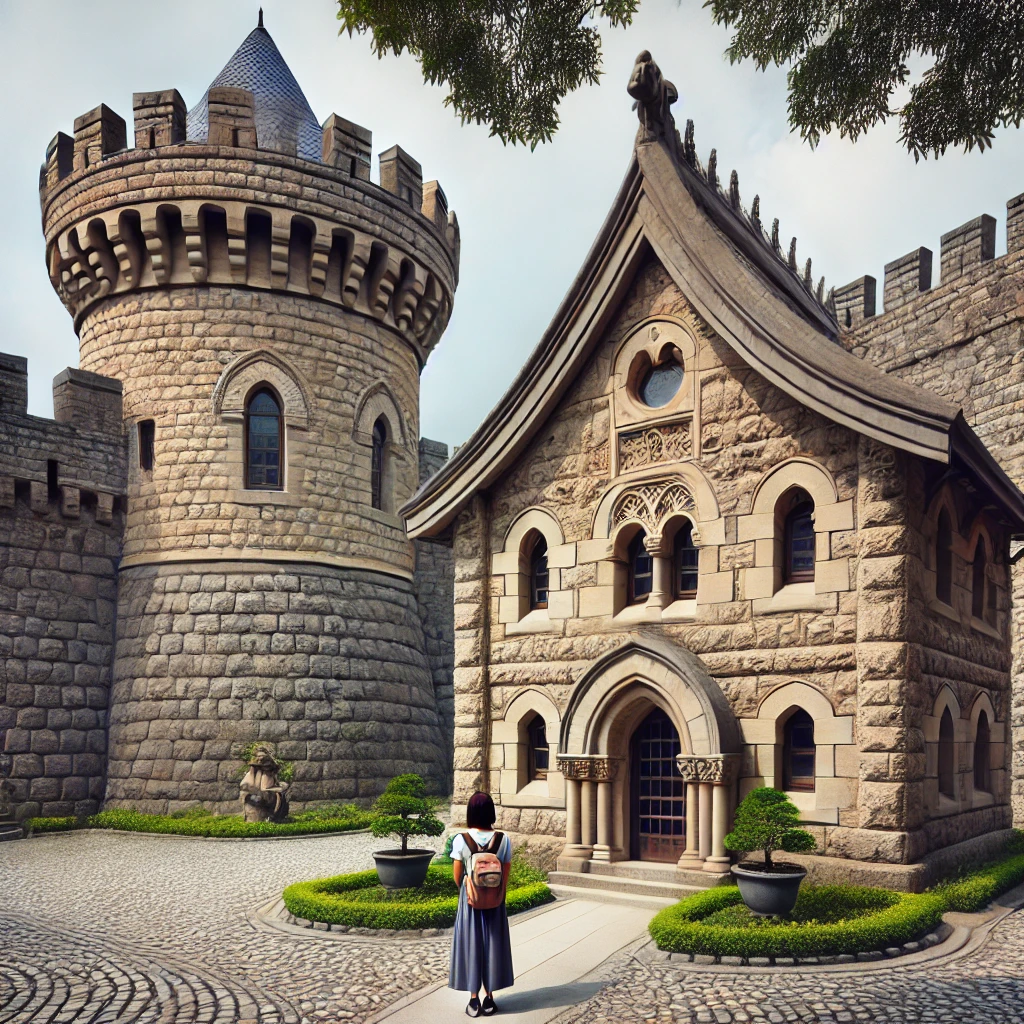ChatGPT:
Rijeka is a vibrant port city on the Adriatic coast of Croatia, known for its rich history, diverse architecture, and cultural scene. It is Croatia’s third-largest city and the primary seaport, giving it a bustling maritime atmosphere. Historically, Rijeka has been influenced by several powers, including the Romans, Venetians, Austro-Hungarians, and Yugoslavia, which is reflected in its architectural diversity, blending styles from neoclassical to modernist.
The city’s waterfront is a hub of activity, with shipyards and ferries connecting Rijeka to other parts of the Adriatic. Rijeka’s Old Town offers narrow streets filled with cafés, shops, and landmarks like the Korzo promenade, the Roman Arch, and St. Vitus Cathedral. One of its most prominent historical sites is Trsat Castle, perched on a hill overlooking the city and offering sweeping views of the Kvarner Gulf.
Rijeka was named the European Capital of Culture in 2020, highlighting its thriving arts scene, which includes festivals, galleries, and museums such as the Maritime and History Museum of the Croatian Littoral. The city’s multicultural heritage is celebrated in its food, where Italian, Central European, and Mediterranean influences blend.
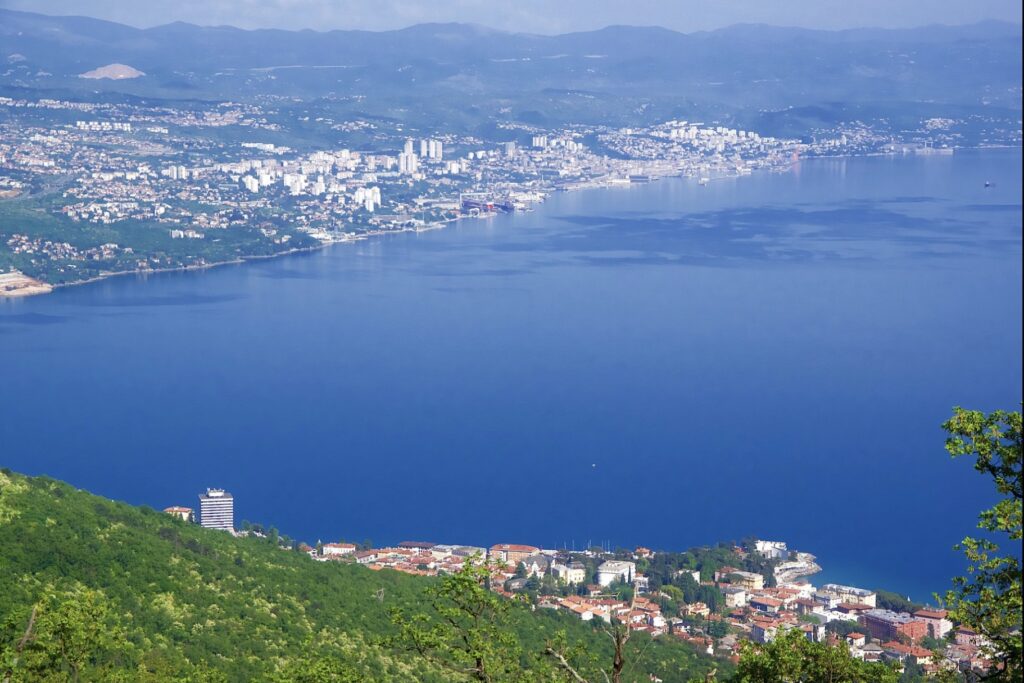
Rijeka, the city’s origins, history, and development have been influenced by various powers and cultures over the centuries.
Origins and Early History
The area around Rijeka has been inhabited since prehistoric times, with the first known settlement founded by the Illyrians. When the Romans conquered the region in the 1st century BC, they established a military outpost called Tarsatica on a hill above present-day Rijeka. This settlement, now the site of Trsat Castle, became an important Roman trade and transport hub.
After the fall of the Roman Empire, the region experienced a series of invasions by the Goths, Lombards, and Slavs. By the early Middle Ages, Rijeka had grown into a small but important town, with the Slavic people settling in and influencing the local culture.
Medieval Period
During the medieval era, Rijeka was caught between the competing influences of the Croatian-Hungarian Kingdom and the Venetian Republic, both vying for control of the Adriatic coast. In 1466, the city came under the rule of the Habsburg Empire, marking the start of a long period of Austrian influence. Throughout this period, Rijeka developed as a port and trade center, with its fortunes tied to the rise of the Austro-Hungarian Empire.
Rijeka in the Habsburg and Austro-Hungarian Empire
Rijeka’s position as a key port for the Austro-Hungarian Empire in the 18th and 19th centuries played a pivotal role in its development. In 1719, the port of Rijeka was declared a free port by Emperor Charles VI, boosting trade and maritime activity. The city flourished as a shipbuilding and industrial center, becoming a significant point of transit for goods between Central Europe and the Mediterranean.
The 19th century saw further industrialization, including the opening of factories and railways. Rijeka’s population grew, and the city attracted people from various ethnic backgrounds, including Croats, Italians, Hungarians, and Slovenes, creating a multicultural atmosphere. This diversity is still reflected in Rijeka’s culture and architecture today.
Early 20th Century and World War I
At the turn of the 20th century, Rijeka’s strategic position made it a point of contention between Italy and the Austro-Hungarian Empire. After the collapse of the Austro-Hungarian Empire at the end of World War I, Rijeka became a disputed territory, with both Italy and the newly formed Kingdom of Serbs, Croats, and Slovenes claiming the city.
In 1919, the Italian poet Gabriele D’Annunzio famously led a group of nationalist forces to seize the city, declaring it an independent state called the Italian Regency of Carnaro. However, this short-lived regime was dissolved by the Treaty of Rapallo in 1920, which designated Rijeka as an independent Free State of Fiume.
World War II and Post-War Period
In 1924, Rijeka (then called Fiume) was annexed by Italy, while the nearby city of Sušak remained part of the Kingdom of Yugoslavia. During World War II, Rijeka suffered significant damage due to bombing raids, and after the war, it became part of Yugoslavia following the signing of the Paris Peace Treaty in 1947. The city was officially renamed Rijeka, and the Italian population largely left the city, replaced by an influx of Croats and other ethnic groups from across Yugoslavia.
Rijeka in Yugoslavia
Under Yugoslav rule, Rijeka continued to be an important industrial and maritime hub. The city underwent rapid development, with new industries, apartment blocks, and infrastructure projects transforming it into one of the most important economic centers in the country. The port remained a crucial link in Yugoslavia’s maritime trade.
Post-Independence and Modern Development
Following the dissolution of Yugoslavia in the 1990s and Croatia’s independence, Rijeka retained its role as a key port and industrial center, though it had to adapt to the economic challenges of transitioning to a market economy. The city underwent a period of economic restructuring, with a focus on developing tourism, culture, and education alongside its maritime industries.
Rijeka’s selection as the European Capital of Culture in 2020 marked a significant moment in its recent history, highlighting its vibrant cultural life and efforts to revitalize the city.
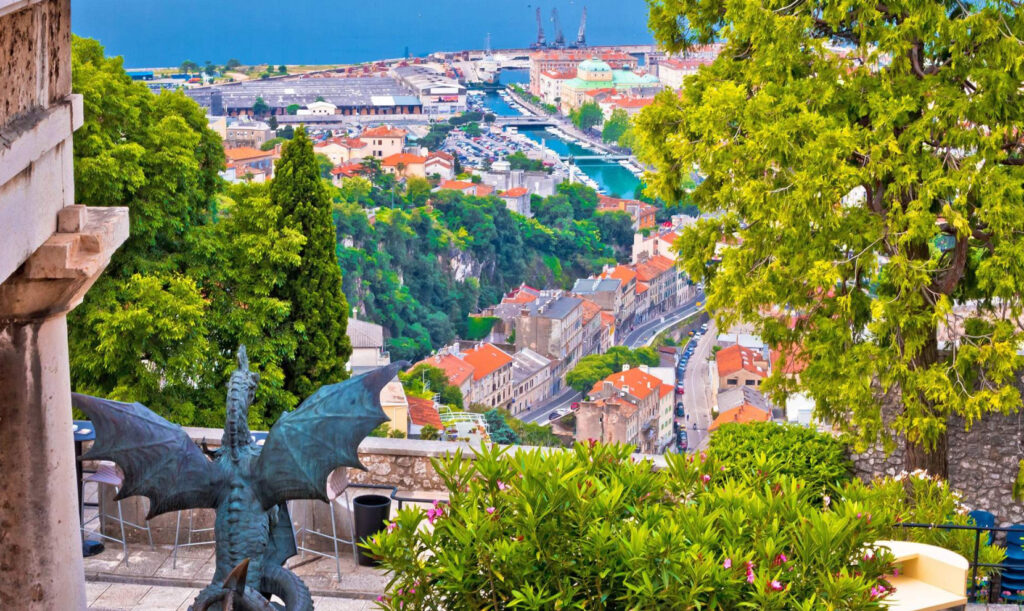
Rijeka boasts a variety of historical monuments and tourist attractions that reflect its rich cultural and architectural heritage. Here are some of the key sites:
1. Trsat Castle (Gradina Trsat)
One of Rijeka’s most famous landmarks, Trsat Castle dates back to ancient times, originally built as a Roman fortress. Perched on a hill overlooking the city and the Kvarner Bay, it offers spectacular views and is a popular tourist destination. The castle also has a café, art exhibitions, and is a venue for cultural events.
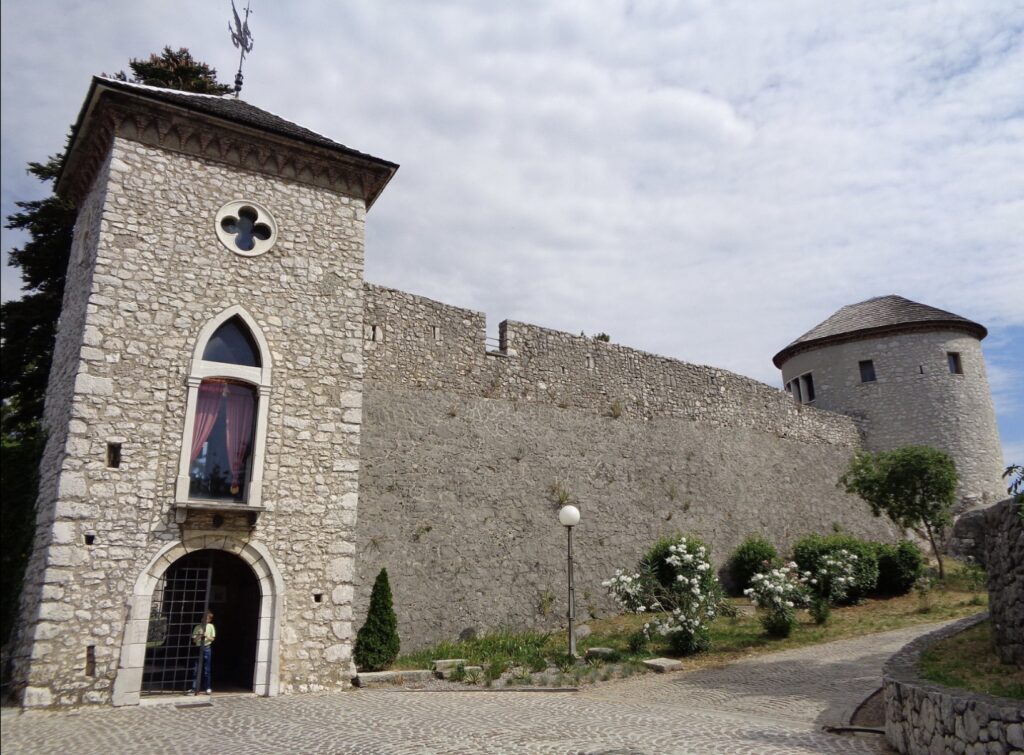
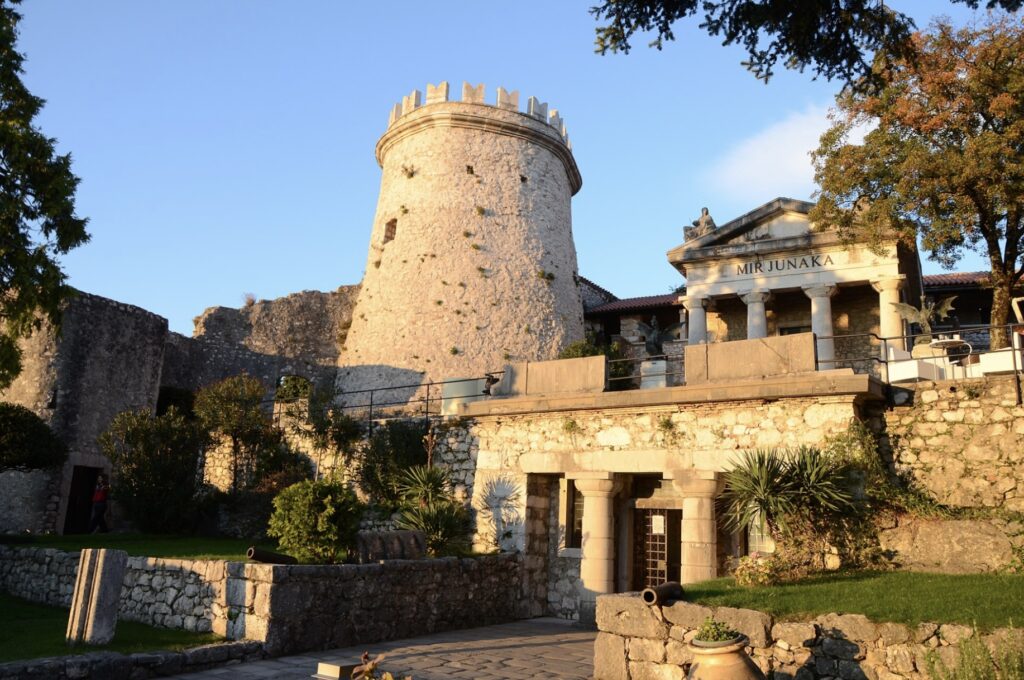
2. St. Vitus Cathedral (Katedrala Svetog Vida)
Rijeka’s baroque cathedral, dedicated to St. Vitus, is a unique circular church built in the 17th century by the Jesuits. It houses important religious artifacts, including the famous Crucifix of Rijeka, which, according to legend, bled when struck by a spear.
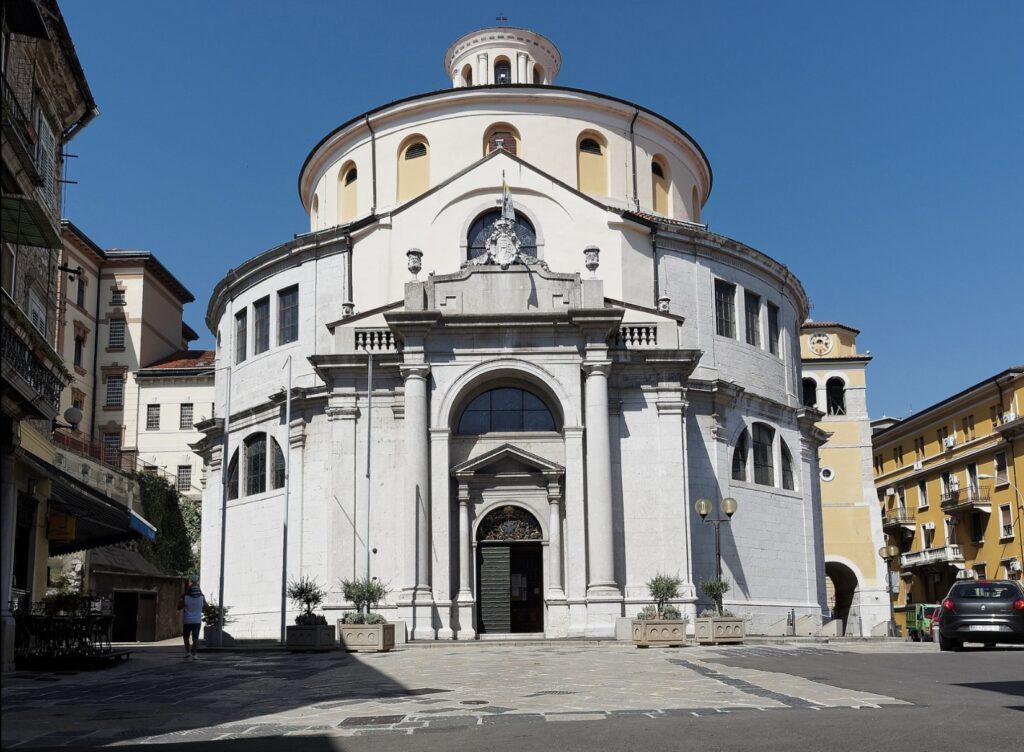
3. Korzo
The Korzo is Rijeka’s bustling pedestrian promenade and the heart of the city’s social life. Lined with historic buildings, cafés, and shops, it’s the perfect place for a leisurely stroll, people-watching, and admiring Rijeka’s eclectic architecture.
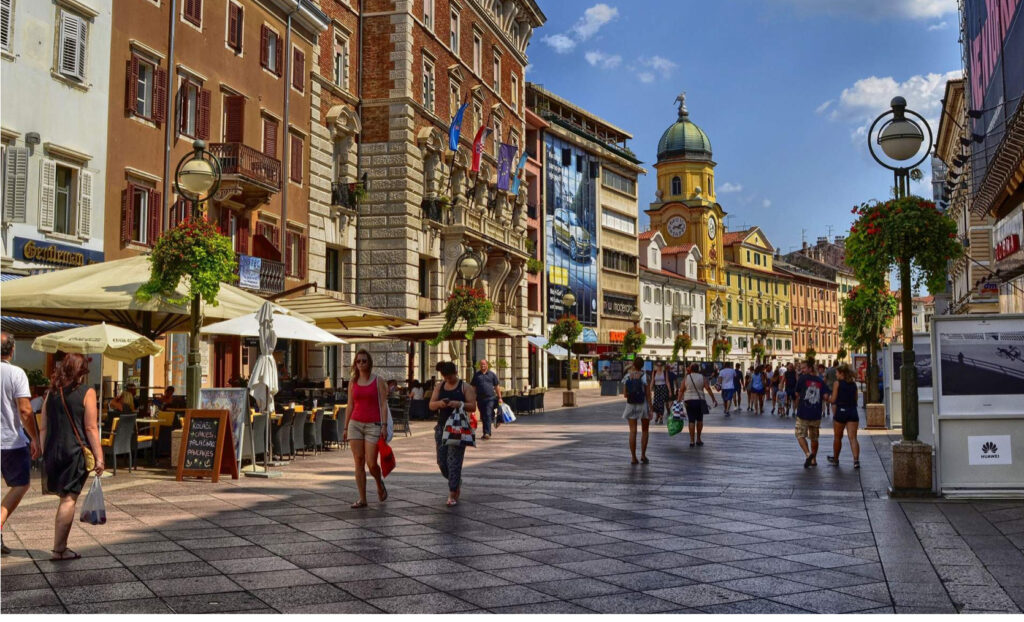
4. The City Tower (Gradski Toranj)
Located along the Korzo, the City Tower is a symbol of Rijeka. Originally part of the city’s defense system, the tower dates back to the Middle Ages, though it was renovated and rebuilt over the centuries, notably after damage during World War II.
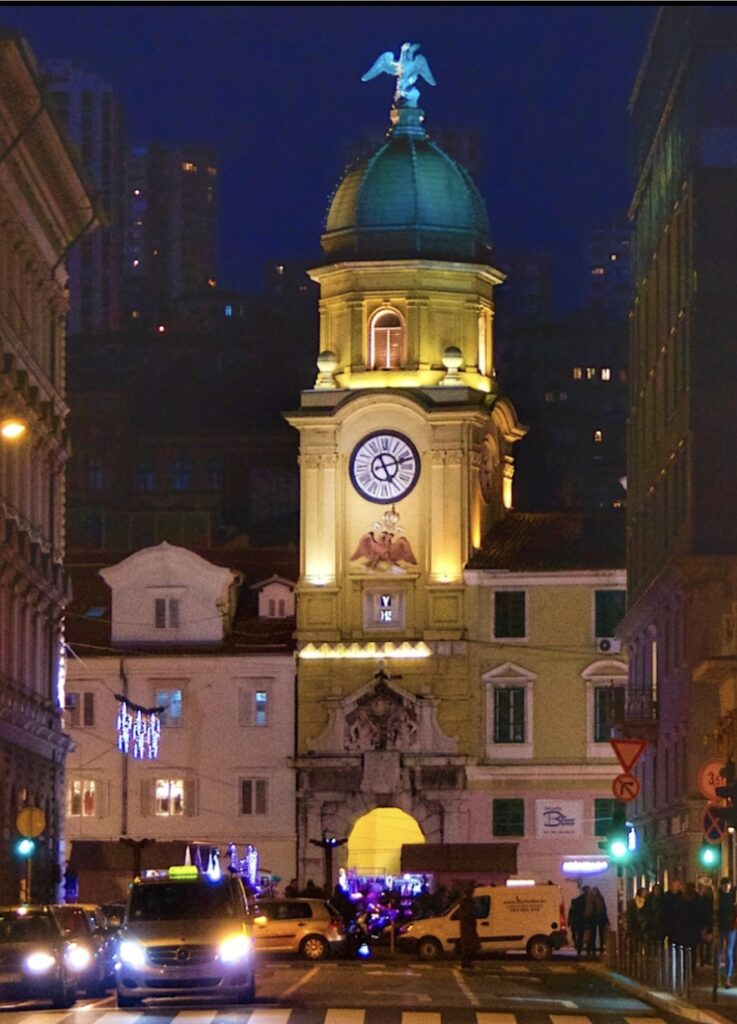
5. Roman Arch (Old Gateway)
An ancient Roman gateway that dates back to the 3rd century AD, this arch is one of Rijeka’s oldest surviving structures. It’s located near the Cathedral of St. Vitus and offers a glimpse into Rijeka’s Roman past.
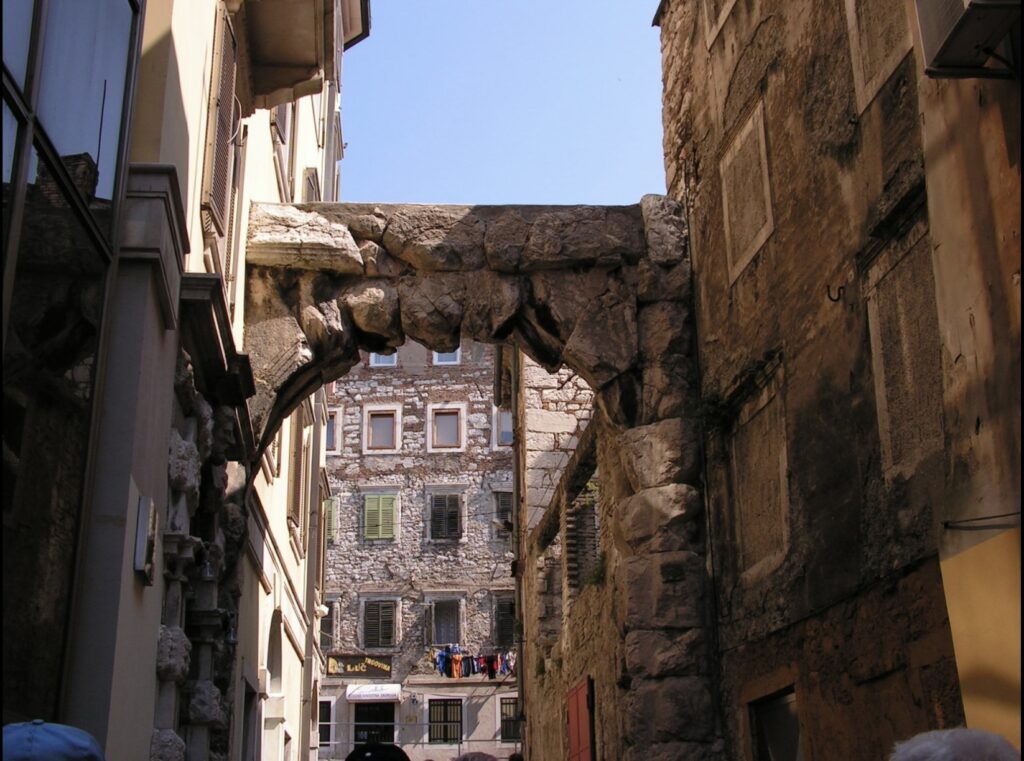
6. Rijeka Tunnel (Riječka Tunel)
Built during World War II as a bomb shelter, this underground tunnel stretches beneath the city center. Recently restored and opened to the public, the tunnel is now a tourist attraction, offering an interesting look into Rijeka’s wartime history.
7. Governor’s Palace (Guvernerova Palača)
This stunning 19th-century palace, once the residence of the Hungarian governor, now houses the Maritime and History Museum of the Croatian Littoral. The museum offers exhibitions on Rijeka’s maritime history, cultural heritage, and art collections.
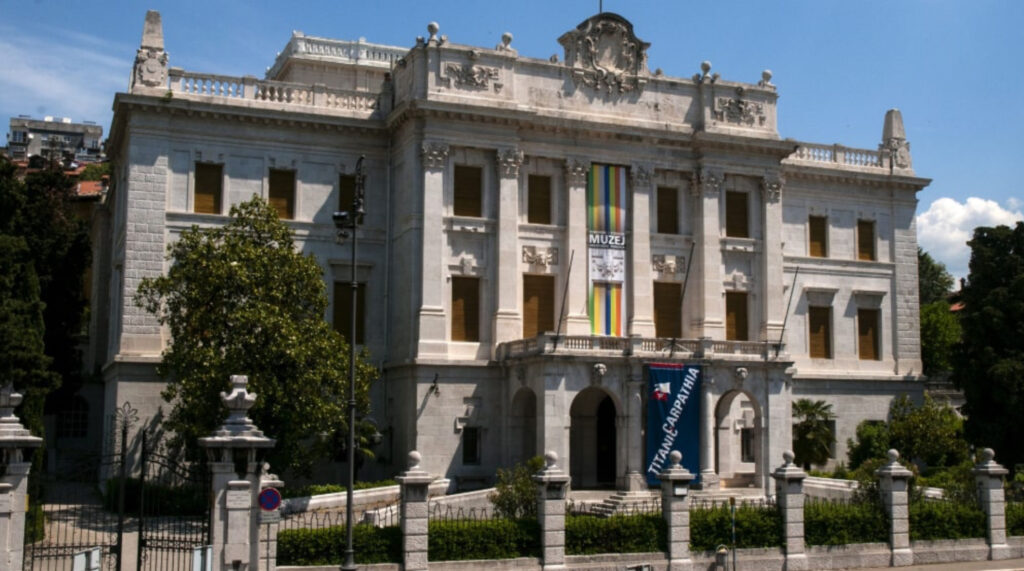
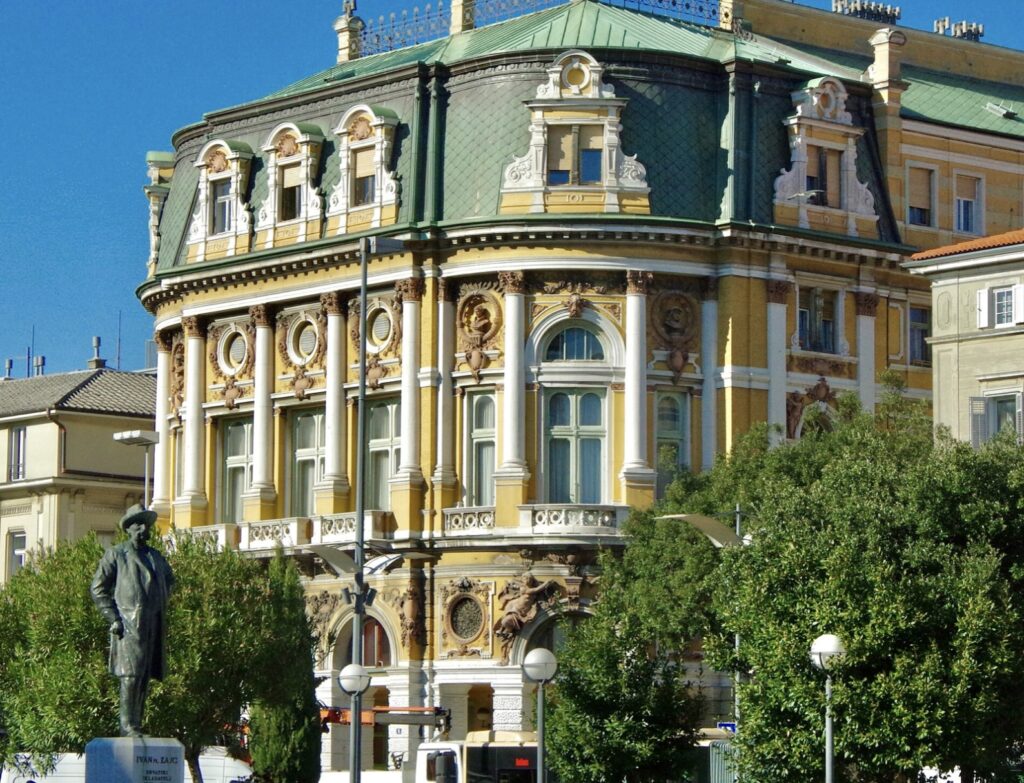
8. Rijeka City Museum (Muzej Grada Rijeke)
Housed in several historical buildings, including the Sugar Palace, this museum focuses on Rijeka’s rich cultural and industrial history, from its shipbuilding past to the artistic and political movements that have shaped the city.
9. Peek & Poke Computer Museum
A quirky, interactive museum dedicated to vintage computers, video games, and technology. It is a favorite among tech enthusiasts and offers a nostalgic look at the evolution of computing.
10. Church of Our Lady of Trsat (Gospa Trsatska)
This pilgrimage church, located near Trsat Castle, is one of the oldest Marian shrines in Croatia. It holds a revered icon of the Virgin Mary and attracts pilgrims from around the region.
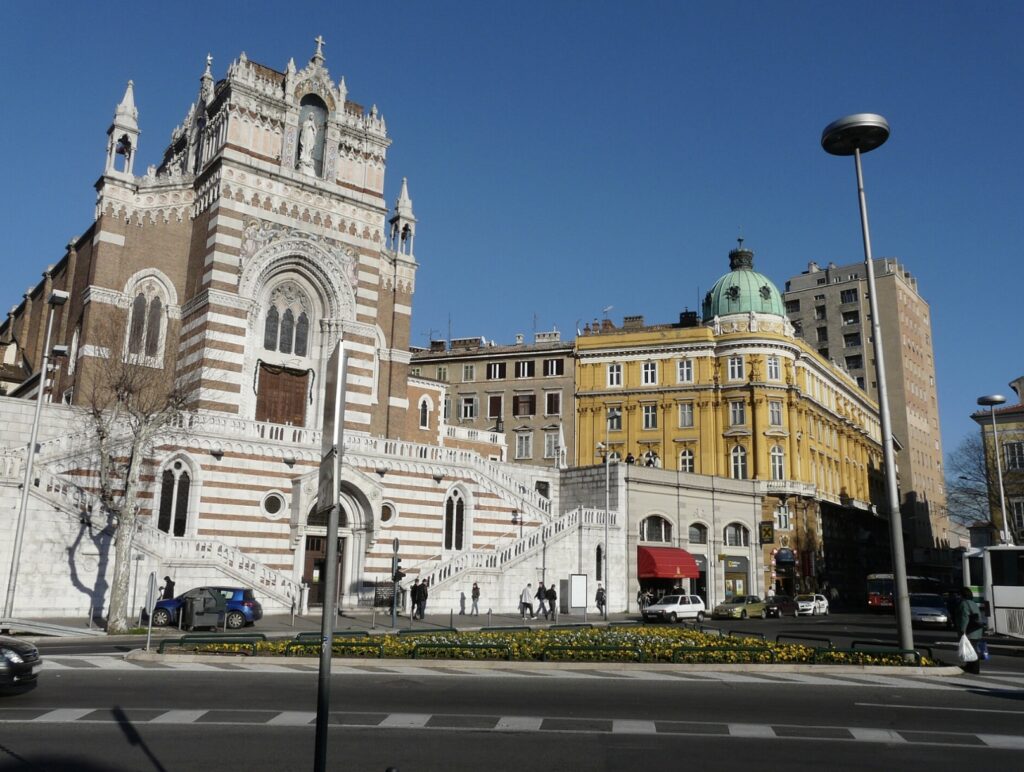
11. Capuchin Church of Our Lady of Lourdes
This neo-Gothic church, completed in the early 20th century, is one of Rijeka’s architectural highlights. Its ornate façade and prominent position on a hill make it one of the city’s most recognizable landmarks.
12. Theatre Park and Croatian National Theatre Ivan pl. Zajc
The Croatian National Theatre, built in 1885, is a masterpiece of neo-baroque architecture. It continues to host operas, ballets, and plays. The adjacent Theatre Park is a serene space to relax, with sculptures and fountains.
13. Rječina River and Molo Longo
The Rječina River runs through Rijeka and is the city’s historical lifeline. The Molo Longo is a 1.7-kilometer-long pier extending into the Adriatic, offering panoramic views of the city and bay. It’s a popular spot for walking and jogging.
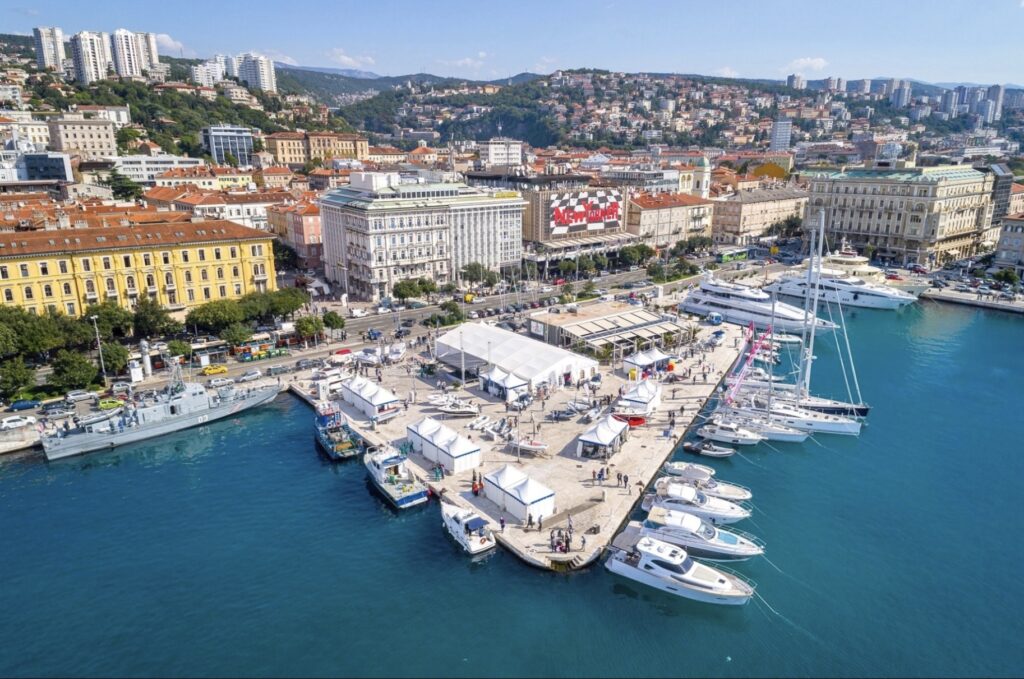
14. Astronomical Centre Rijeka
Located on a hill with a fantastic view of the city, this modern astronomical observatory and planetarium is a great spot for stargazing and learning about astronomy. It also offers interactive exhibits and educational programs.
15. Kantrida Stadium and Beach
For sports enthusiasts, Kantrida Stadium, carved into the rocks with a stunning view of the sea, is an iconic football venue. Nearby, Kantrida Beach is a popular spot for swimming and sunbathing, offering a mix of pebbles and clear waters.
16. The Maritime and History Museum of the Croatian Littoral
This museum is housed in the Governor’s Palace and showcases the maritime history of Rijeka and the surrounding region. Its exhibitions explore everything from ancient shipbuilding techniques to the development of modern maritime trade.
17. City Market (Riječka Tržnica)
The central market, built in the early 20th century, features beautiful secessionist architecture and is a lively spot where locals shop for fresh produce, seafood, and other goods. The market is a great place to experience the city’s vibrant daily life.
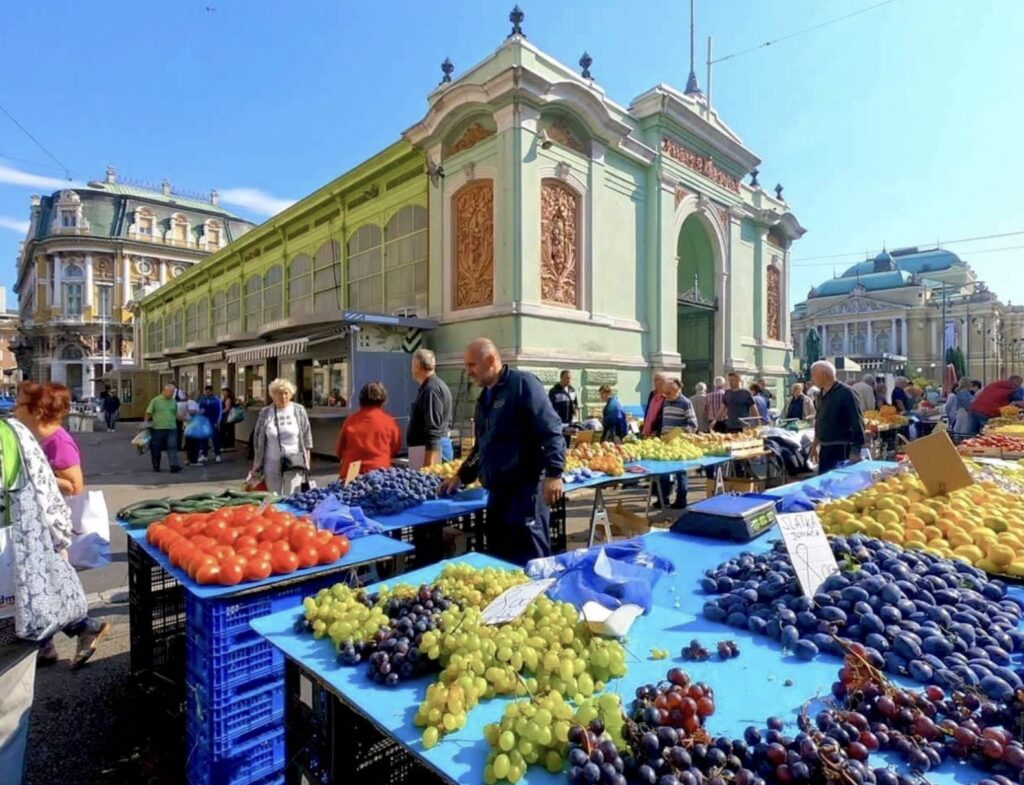
These attractions provide a deep dive into Rijeka’s history, cultural development, and modern-day vibrancy, making it a unique destination for travelers.
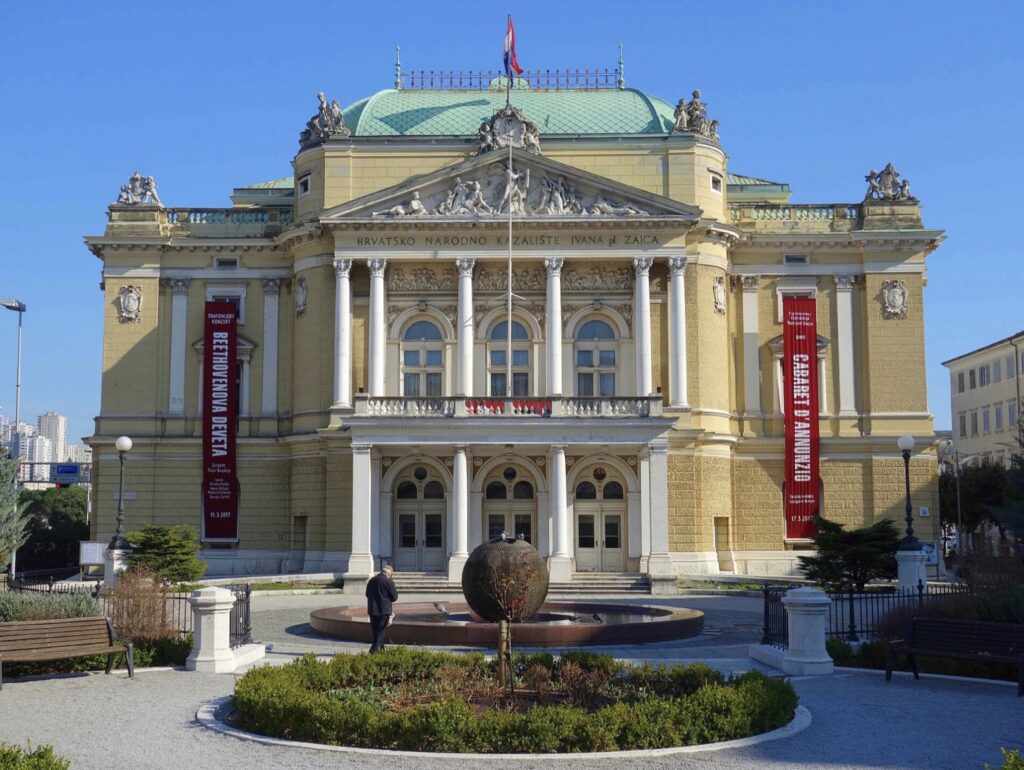
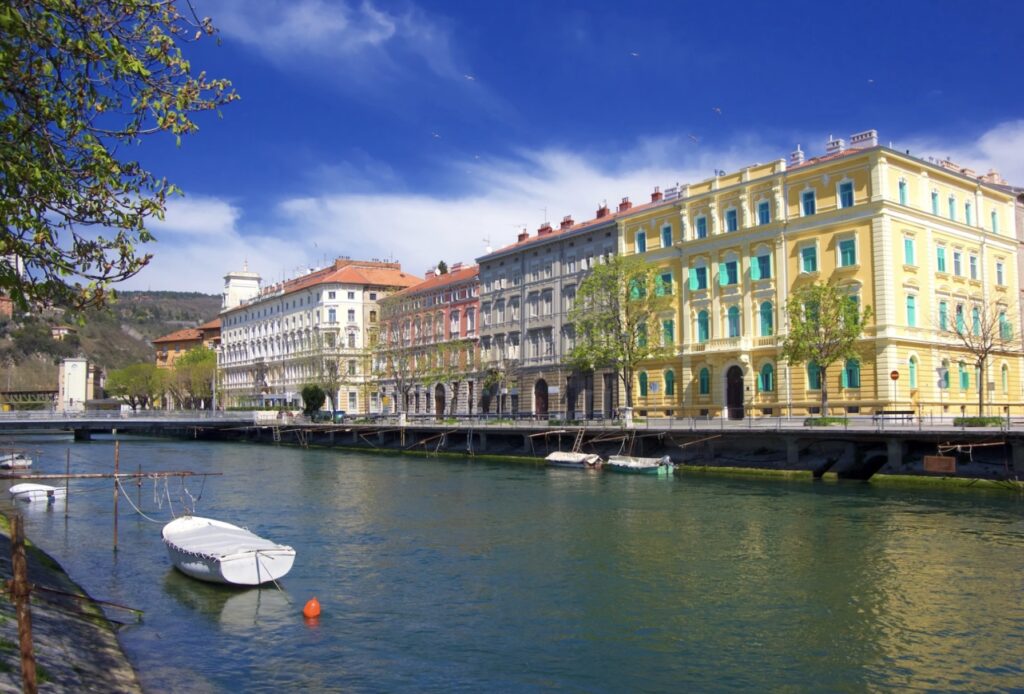
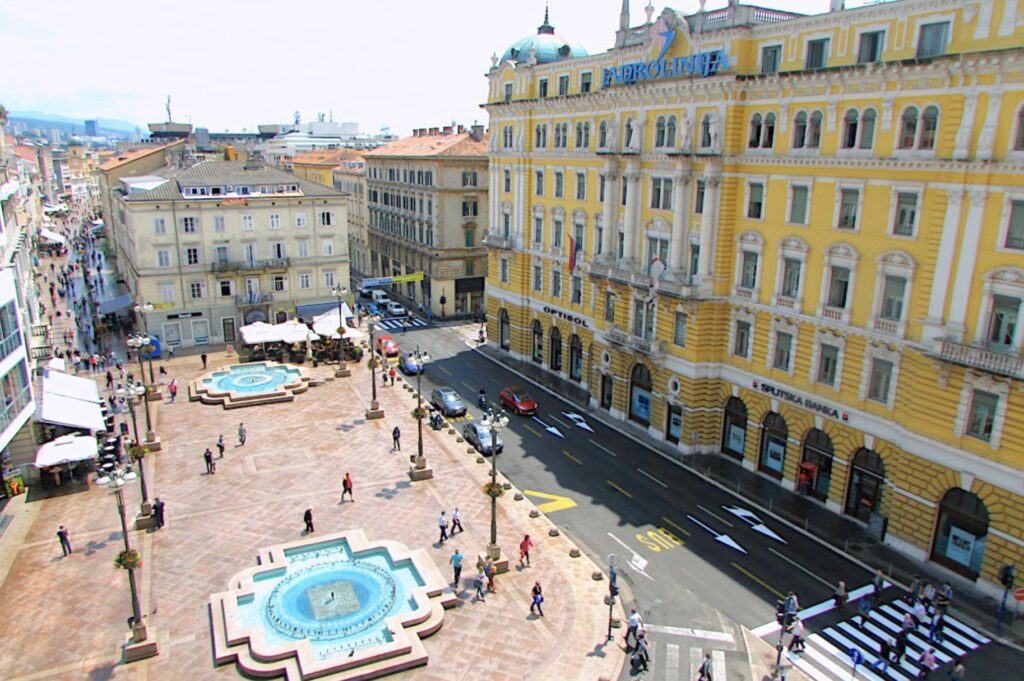
Here’s a suggested two-day itinerary for visiting Rijeka, Croatia, with a focus on exploring the city’s historical sites, incorporating local food specialties, and staying in a unique downtown accommodation.
Day 1: Historical Highlights and Local Flavors
Morning
- Breakfast at King’s Caffe Food Pub: Start your day with a hearty Croatian breakfast at this popular spot on the Korzo, offering traditional dishes like pršut (prosciutto), cheese platters, and freshly baked bread.
- Explore the Korzo: After breakfast, stroll along the Korzo, Rijeka’s central pedestrian promenade. Admire the architecture and stop by The City Tower and Roman Arch for photos.
- Visit St. Vitus Cathedral: Head to the baroque St. Vitus Cathedral, a unique circular church that houses important religious artifacts, such as the famous Crucifix of Rijeka.
- Rijeka Tunnel: Walk through the recently restored Rijeka Tunnel, a historical World War II bomb shelter, to get a unique underground perspective of the city.
Lunch
- Konoba Fiume: For a traditional Croatian lunch, visit Konoba Fiume, where you can enjoy dishes like ćevapi (grilled minced meat), pašticada (Dalmatian beef stew), and fresh seafood paired with local wines.
Afternoon
- Trsat Castle and Church of Our Lady of Trsat: Take a short bus or taxi ride up the hill to visit Trsat Castle, where you can enjoy panoramic views of Rijeka and the Kvarner Gulf. After exploring the castle, visit the nearby Church of Our Lady of Trsat, one of Croatia’s oldest pilgrimage sites.
- Relax at Molo Longo: Head back down to the city and take a relaxing stroll along Molo Longo, the 1.7-kilometer pier that offers stunning views of the sea and the city.
Dinner
- Bistro Mornar: Dine at this traditional seafood bistro near the port. Try the local specialty brudet (fish stew) or grilled squid, accompanied by a glass of Croatian white wine like Malvazija.
Accommodation
- Hotel Bonavia Plava Laguna: Stay at this historic four-star hotel located in the heart of Rijeka. The hotel is known for its elegant rooms, excellent service, and proximity to the Korzo, making it a perfect base for exploring the city.
Day 2: Culture, Museums, and Local Delicacies
Morning
- Breakfast at Cukarikafe Bar: Start your morning with coffee and a light breakfast at this quirky café known for its vintage décor and relaxing atmosphere.
- Visit the Governor’s Palace: Head to the Maritime and History Museum of the Croatian Littoral, housed in the Governor’s Palace, and explore exhibitions about Rijeka’s maritime past and cultural heritage.
- Peek & Poke Computer Museum: A short walk from the palace, this fun, interactive museum dedicated to vintage computers and video games is a quirky stop that’s great for tech enthusiasts and nostalgia lovers.
Lunch
- Conca D’oro: For lunch, enjoy a meal at this local favorite serving traditional Mediterranean and Italian-inspired dishes. Try local pasta specialties like šurlice with seafood, or pizza topped with local ingredients.
Afternoon
- Explore Rijeka’s Markets: Visit the Rijeka City Market (Riječka Tržnica) to experience the vibrant daily life of locals. Here, you can browse stalls filled with fresh seafood, local produce, and artisanal goods. It’s a great place to pick up local snacks or souvenirs.
- Capuchin Church of Our Lady of Lourdes: End the afternoon with a visit to the neo-Gothic Capuchin Church, an architectural gem that offers a peaceful retreat from the bustling city.
Dinner
- Restaurant Štacija: Located along the coast, this restaurant offers a fine-dining experience with stunning views of the Adriatic. You can try local delicacies such as Kvarner scampi, considered one of the finest varieties in the world, or grilled octopus.
Evening
- Nightcap at Teatro Lounge Bar: Finish your day with a nightcap at Teatro Lounge Bar, located near the Croatian National Theatre. The stylish bar is known for its selection of local wines and cocktails, making it a perfect spot to relax and reflect on your trip.
This itinerary allows you to experience the best of Rijeka’s history, culture, and cuisine, while staying in a unique and comfortable downtown accommodation.
